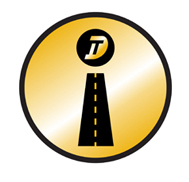

Remote Weather Stations used for avalanche forecasting
The threat of avalanches in the high country is ever present each winter—especially in avalanche-prone regions including Idaho Highway 21 between Lowman and Stanley in southwest Idaho. Recently the avalanche team, led by Bill Nicholson, in collaboration with Dan Thornock, Chris Kaetzel, and Tyler Zundel of IT services, deployed remote weather stations as an innovative tool that provides better data and critical information to maintaining a safe, mobile transportation system.
Nicholson (pictured below) outlined this implemented ITD Innovation as a customer-service improvement. It also meets ITD's core mission of enhancing safety and mobility along the corridor.
From ITD Lead Avalanche Tech. Bill Nicholson
For many years, the avalanche techs have struggled with unreliable, expensive weather stations that are critical to good decision making on ID-21. In the fall of 2016, the three stations became inoperable and had to be replaced.
Our plan was to install simpler, less-expensive stations that could be maintained by the avalanche techs.
Due to the time of year, we needed to use a contractor to install the stations, but future stations could be done completely by avalanche staff.
The finished stations use a combination of free-wave radios, a cell modem and cloud services to communicate and transmit information from our three weather stations.
This system is working extremely well, providing reliable data that is easily queried for research. In addition, it is all off of ITD servers, eliminating security risks and use of storage space.
The cost saving on each station is estimated at $40,000 per station ($120,000 total), with a yearly maintenance savings of $10,000.
These types of weather stations are not limited to avalanche-forecasting use. They could be implemented as Remote Weather Information System (RWIS) sites as well as Winter Breakup forecasting, and for any projects needing remote sensing.
Published 12-08-17